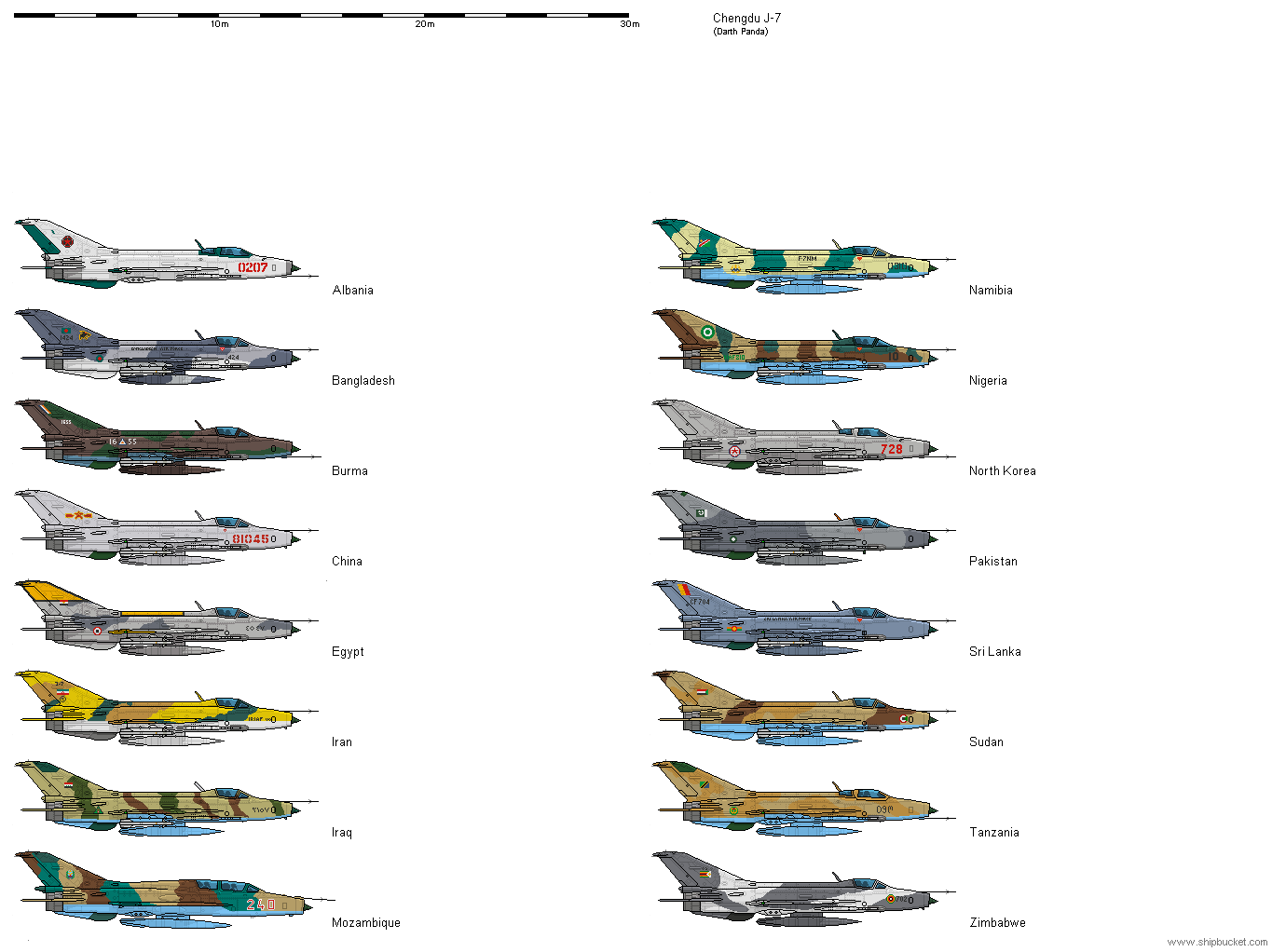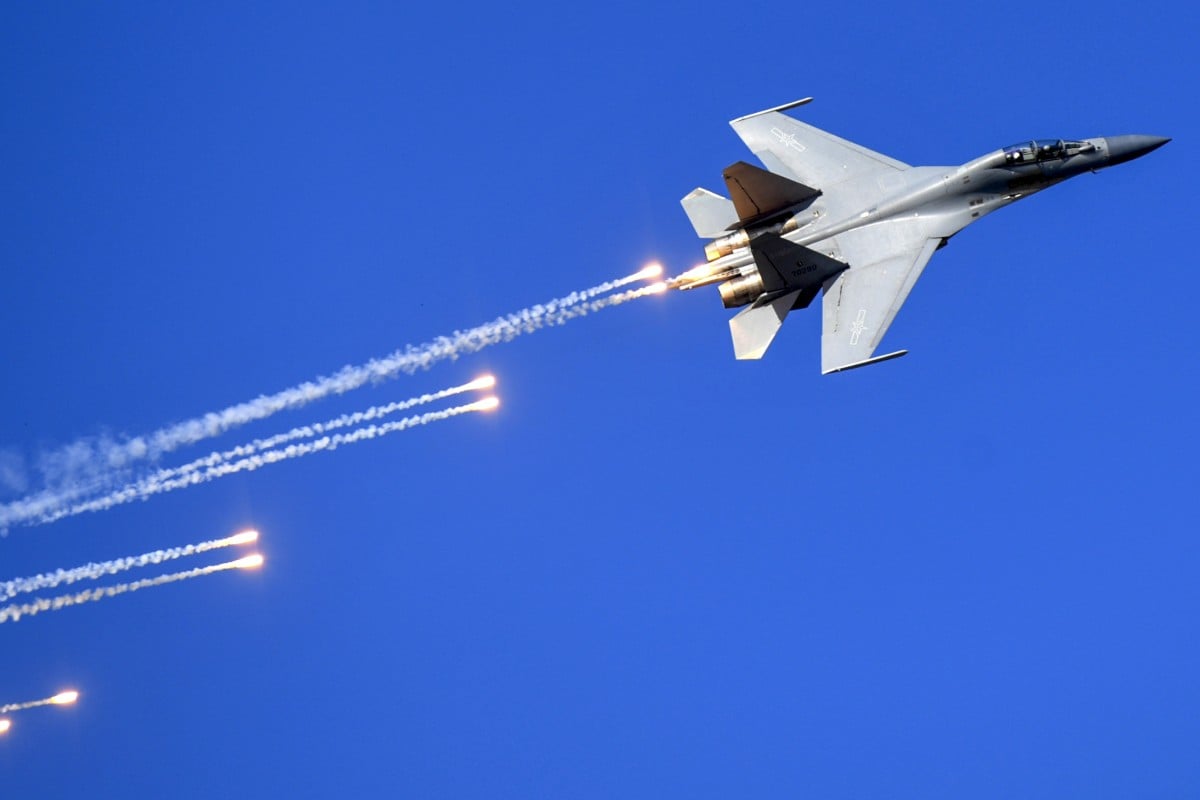J 7 Aircraft - Meanwhile, the jet crash on Thursday was the third aircraft mishap in China since March of this year. A passenger plane carrying 122 people from Tibet Airlines skidded off the runway and caught fire during take-off in China's southwest Chongqing city last month, injuring over 40 people.
Nonetheless, political pressure for China to develop its own supersonic fighter led to mass production by the 1980s — just as the third-generation MiG-21 design was being rendered obsolete by fourth-generation fighters such as the F-16 and MiG-29.
J 7 Aircraft
![Chengdu F-7 - 3D Model By Aleksejfongrozni (@Aleksejfongrozni) [A6d2202]](https://media.sketchfab.com/models/a6d2202e43e34ca8888a6cfefa0d8d46/thumbnails/1eb93fa87120482d837b71d65f0d2216/987c84327e88452d961fb9440c11ef99.jpeg)
The J-7 is a single-engine, lightweight fighter aircraft designed and manufactured by Chengdu Aircraft Corporation (CAC) of China. Its design is based on its predecessor, the MiG-21 aircraft. The export version of J-7 has been designated the F-7.
Performance Of J- Fighter Aircraft
This would be the equivalent of the US military operating F-35 stealth fighters alongside 1960s-vintage F-4 Phantoms. "The retirement of the J-7s would mark the full shift to fourth- and fifth-generation aircraft for the PLAAF," Rod Lee, research director for the US Air Force's China Aerospace Studies Institute, told Insider.
On March 12, an Eastern Airlines plane crashed into a mountainous area in the southern Guangxi Zhuang region. The crash killed all 132 passengers and crew on board, making it the country's biggest flight catastrophe in decades.
Firefighters directed water hoses onto a mound of rubble at the side of what appeared to be a three-story building in one footage released online. Laohekou Airport is used to train new fighter pilots from the Central Theater Command Air Force.

The decommissioning of the J-7, which began in 2018, also marks a transition for Chinese airpower. China has been fielding advanced Chinese-designed aircraft such as the J-16 fighter and the J-20 stealth fighter, as well as newer Russian imports such as the Su-27 and Su-30.
Orders And Deliveries
Interestingly, Global Times described the J-7 as "the first supersonic fighter jet developed by China that can reach Mach 2." The article neglected to mention that the J-7 is a copy of the Soviet MiG-21 (NATO codename: "Fishbed") that China partly reverse-engineered.
The early J-7 (NATO code name: "Fishcan") was a disappointment, according to Rupprecht: "It had a very limited internal fuel capacity and thus limited range. With only one gun, its firepower was less than adequate. It was
troubled by poor reliability, and its ejection seat had severe flaws." “Laohekou Airport is now mainly used as a training site for new fighter pilots from the Guangzhou Military Region Air Force. The airport, which has a 5,960-metre runway, stopped serving civil aviation routes after the Liuji Airport in Xiangyang opened in 1989,” South China Morning Post (SCMP) reported.
The avionics system incorporates a HUDWAC (head-up display and weapon aiming computer) supplied by GEC-Marconi and global positioning system by Garmin and a navigation and bombing system. It also features a multi-mode pulse-Doppler Super Skyranger radar that provides a full look-down/shoot-down capabilities and offers target range, range rate, and line-of-sight data to the avionics system.

The J-7/F-7 is armed with two 30mm cannons, which can fire munitions at the rate of 60 rounds a minute. The aircraft has five hardpoints, four of which are located under the two wings and one beneath the centreline fuselage section.
The J-7 was developed into more than a dozen variations throughout the course of its 48-year production run. After improving the technology of the original versions into the J-7PG and J-7BG series for Pakistani and Bangladeshi air forces, Chengdu created trainer derivatives of the aircraft for domestic Chinese usage, which were provided to both the PLA Air Force and the PLA Naval.
Air Force. Two J-7 fighter jets attached to an aviation brigade of the air force under the PLA Western Theater Command take off simultaneously for a live-fire flight training exercise on March 22, 2018. (eng.chinamil.com.cn/Photo by Xi
Bobo and Cao Jiang) The J-7 also became prominent as the F-7 (NATO code name: "Airguard"), an export version to nations looking for a cheap, simple fighter without too many strings attached. Pakistan became the biggest non-Chinese user and still operates 66 F-7s, according to The Military Balance.
Other users have included Albania, Egypt, Iraq, Zimbabwe, and Iran. The delivery of technical documents to Shenyang Aircraft Factory was, however, not carried out due to deteriorating relations between Beijing and Moscow. This allowed the company to develop its own version of the MiG-21 through a reverse engineering process.

The Chinese-made MiG-21 was developed in March 1964 and initially known as Type 62. It was later redesignated as the J-7 (Jian-7). Through reverse engineering, the company was able to produce its own version of the MiG-21.
The Chinese-made MiG-21 was first known as Type 62 when it was developed in March 1964. It was later renamed the J-7 (Jian-7). In 2021, China flew four J-7s in exercises near Taiwan. This surprised observers, who questioned why old J-7s — which the Taiwanese have dubbed "grandpa jets" — were flying alongside modern J-16 fighters.
This led to speculation that the J-7s had actually been converted into drones. While the J-7 pilot ejected safely, the crash led to an explosion near the Laohekou airport. Multiple videos shared on Chinese social media Weibo purported to show that some houses near the crash site were substantially damaged and engulfed in fire.
"The cost of converting legacy aircraft into UCAVs is relatively low, but they retain many of their manned-variant characteristics," Daniel Rice, a non-resident fellow at the Mitchell Institute, wrote in a recent paper. "Converted airframes have the same performance, maneuverability, and payload capacity as the original platforms. They also reduce the risk of casualties in combat."
The J-7 can climb at the rate of 155m/s, while the maximum and cruise speeds of the aircraft are 2,120km/h and 1,200km/h respectively. Its combat range is 850km. The ferry range of the J-7 is 2,000km and the aircraft can fly to a maximum altitude of 17,800m.

At the same time, China has about 350 J-7s and J-8s (a J-7 derivative) used by the Chinese air force, plus another 24 J-8s operated by the Chinese navy, according to The Military Balance 2022, published.
by the International Institute for Strategic Studies. (Between its air force and navy, China now has the world's third-largest aviation force, according to the Pentagon.) The Chengdu J-7 is a single-engine, lightweight fighter jet produced by Chengdu Aircraft Corporation and derived on its antecedent, the Soviet Mikoyan-Gurevich MiG-21.
The export variant of the aircraft is labeled as F-7. The aircraft was primarily built to target the needs of the People's Liberation Army Air Force (PLAAF). From 1993 to 2013, over 2,400 Chengdu J7s were produced.
In May 2013, aircraft production ended. The aircraft is armed with 2×30 mm Type 30-1 cannons (60 rounds per gun). It has five hardpoints in total, four below the wing, and one below the centerline fuselage.
It is also equipped with a 55mm rocket pod (12 rounds) and a 90mm rocket pod (7 rounds). The aircraft is fitted with various air-to-air missiles and 50kg to 500kg of unguided bombs. In August 2005, the Namibian Air Force ordered 12 F-7NM aircraft.

And the Nigerian Air Force acquired 12 F-7NI fighters and three FT-7NI trainers from CAC in 2008; the first batch of aircraft was delivered in December 2009. Further F-7 orders include those from the Sudanese Air Force (22), Egyptian Air Force (90), Tanzanian Air Force (16), Yemen Air Force (18), Air Force of Zimbabwe (24), Islamic Republic of Iran Air.
Force (24), Myanmar Air Force (64) and the North Korean Air Force (40). It can carry a payload of up to 2,000kg. The J-7 is fitted with PL-2, PL-5, PL-7, PL-8, PL-9, Magic R.550 and AIM-9 air-to-air missiles (AAM), unguided bombs weighing 50kg to
500kg, a 55mm rocket pod and a 90mm rocket pod. The airframe of the J-7 was tested in November 1965 and the aircraft completed its maiden flight in January 1966. The J-7 was certified as an operational aircraft by the Chinese Military in June 1967. J-7s were produced at the rate of
14 aircraft per month during 1989. Despite the termination of production in 2008, the J-7 is currently in operation with a number of air forces worldwide. The Chengdu J-7 is a Chinese license-built version of the Russian supersonic jet Mikoyan-Gurevich MiG-21.
The aircraft was produced from 1965 to 2013 and remains in service mostly as an interceptor aircraft in various air forces, which includes the People's Liberation Army Air Force. The manufacturing company developed fifty-four versions of the J-7 in order to be suitable for the PLAAF.
Two of the J-7 versions were built by the CAC, which included an indigenous Chinese version and an export version. Around twenty-eight domestic versions and twenty-six export versions are in service around the world. In the last few years, several Chinese fighter planes have crashed during training flights.
For instance, in 2015, a PLAAF pilot safely ejected only minutes before his plane went down a hillside. A military pilot died two years earlier when his fighter aircraft crashed during night training in eastern Zhejiang.
The Chengdu J-7 was an all-weather interceptor built to conduct ground attack missions. The delta wings allow the aircraft to climb to higher altitudes and fly at supersonic speeds. It is designed with a small airframe and robust engines and it is solely good enough for point-defense because of its smaller range capabilities.
j 7 fighter, chengdu f 7, chengdu j 7, chinese j7, list of all airplanes, j 7e, air force rj aircraft, j 7 fighter jet